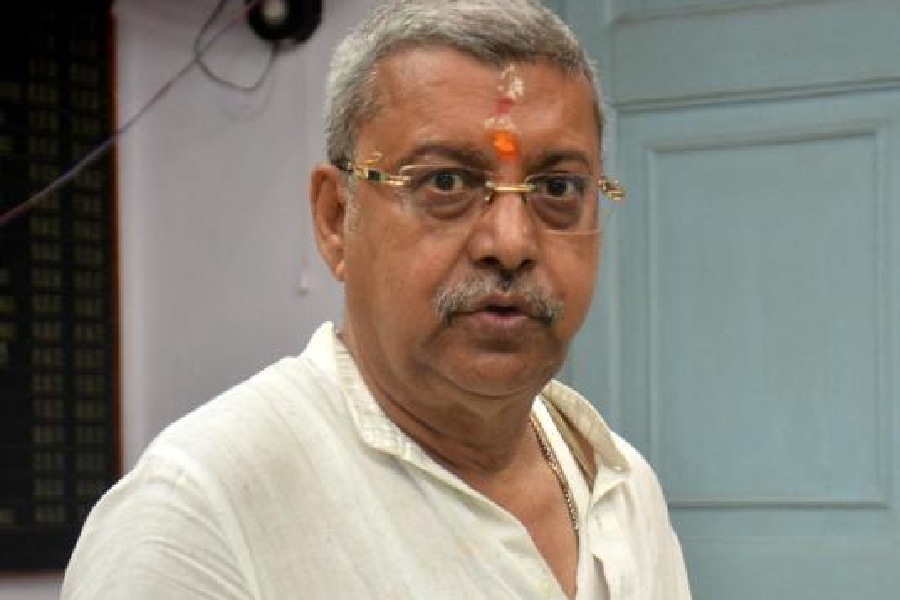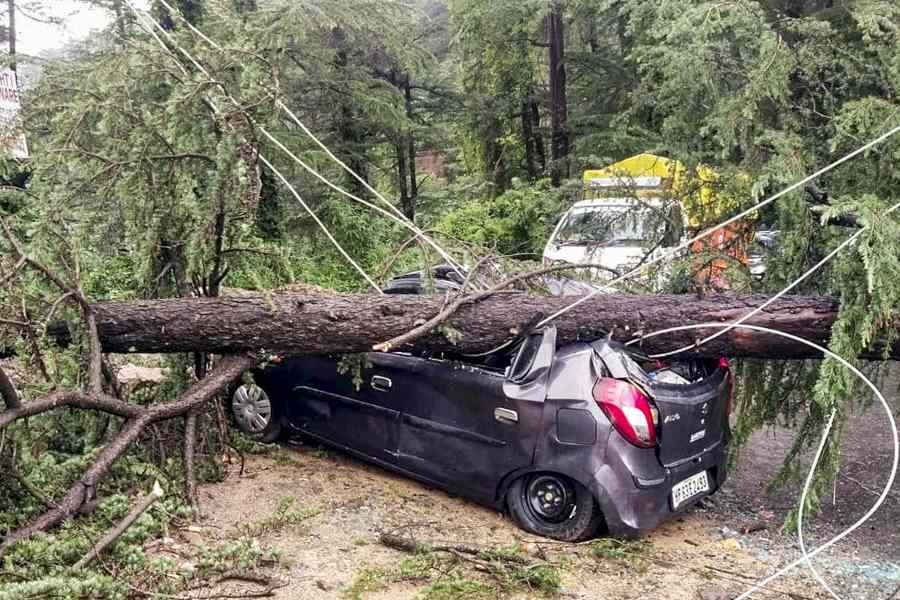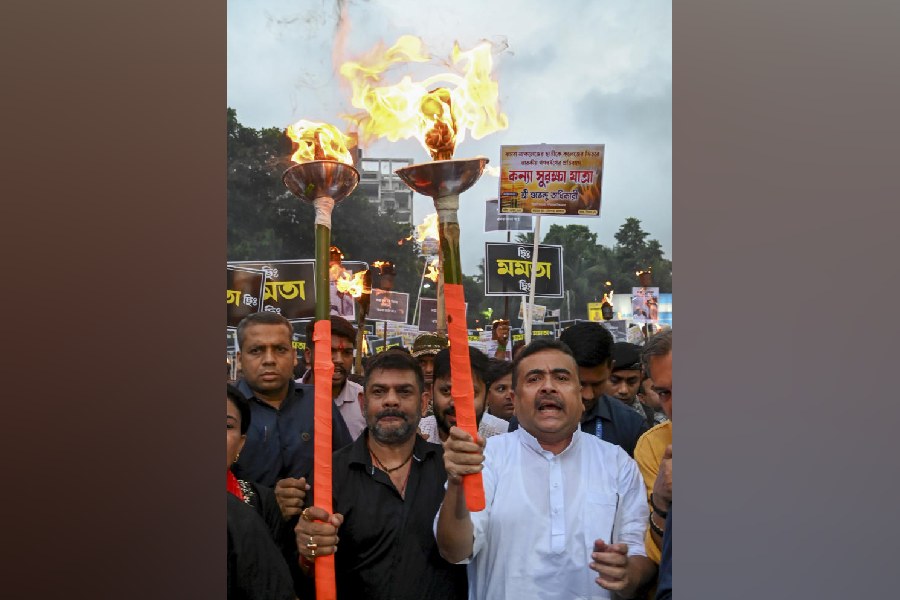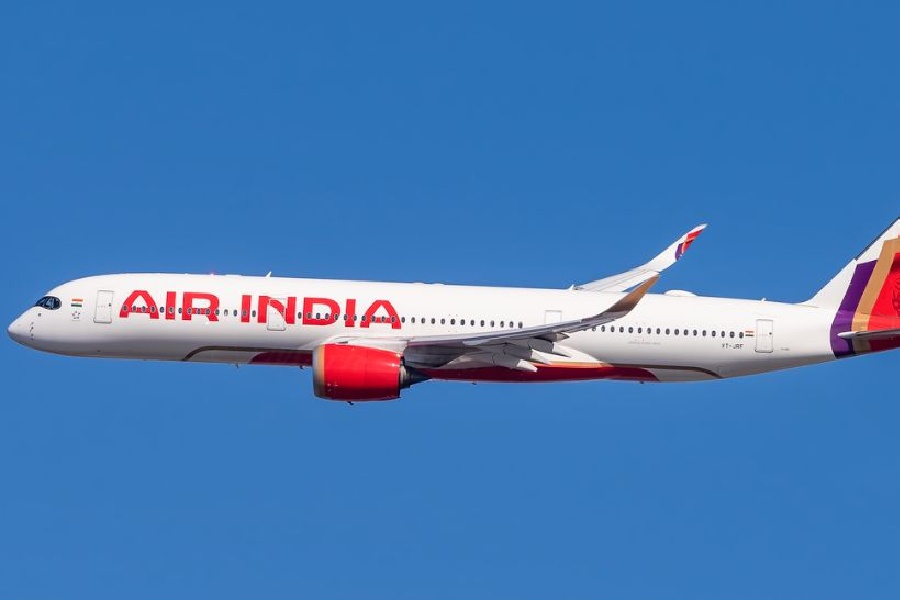 |
| A pillar demarcating the international border dividing Longwa village. Picture by Nishit Dholabhai |
Longwa (Indo-Myanmar border), Oct. 17: At first glance, it looks like any nondescript village in Nagaland. But perched atop a ridge amid a stretch of evergreen rainforest, Longwa occupies a unique place on the map. The international border cuts right through this village, ensuring that one half of Longwa is in India, the other in Myanmar.
Last year, the young chieftain of the Naga village — 427 km north of the state’s capital Kohima — shifted his thatched hut by a few metres, so that it falls in Indian territory.
Officially, Longwa is under Mon district of Nagaland, dominated by the Konyak tribe. The demography though is not altered by demarcation of nations on the map, nor has the culture changed. Villagers from both sides still gather during festivals and enjoy themselves.
“Earlier, one half of my house was in India, the other in Myanmar,” Tonyei, the chieftain, told The Telegraph. But the shifting of the house was just a formality. For years, Tonyei’s family— his grandfather and then his father — has been the head of the village, looking after the affairs on both sides of the international border.
There is no need for visas and passports in this region. Konyei “rules” over his kingdom without any problems.
In Longwa, 361 houses fall on the Indian side and about 50 in Myanmar. On the Myanmar side of the village, a primary school has been set up by the Myanmar administration.
The teacher, Maong Pai, in his twenties, is from a nearby town, Lahe. He takes care of 19 children from Longwa, teaching them in Burmese. After a couple of years in touch with his Indian friends, he’s even picked up a little Nagamese, the local dialect in Nagaland. “I went to Mon town the other day and was offered biscuits,” he said with a smile.
The Myanmarese army has a post at Yanchong, “half-a-day's walk” from the village through thick forest. “The armymen come only rarely, on horseback. They are seldom in uniform, mostly in shorts and chappals,” said an amused Indian jawan. They do interact with the villagers though, sometimes shooting fowl, sometimes playing with the children.
An international trade centre is coming up in the village, in order to facilitate local trade across the border. The road to Yanchong is difficult but there is flourishing local trade between the people. Myanmar kyats are freely available on the Indian side and so are their goods like footwear and opium — Longwa villagers sell clothes and tea leaves to neighbouring Myanmarese villages of Khenmoi and Langkhu.
Though Myanmarese families may belong to the same stock — the Konyak Naga tribe — and perhaps have common ancestors, luck does not favour them where modern amenities are concerned. They neither have proper water connection, nor are they allowed to use the community hall built by the villagers. But Tonyei argued, “We are a single village and our people are united; we even have joint families on either side.”











